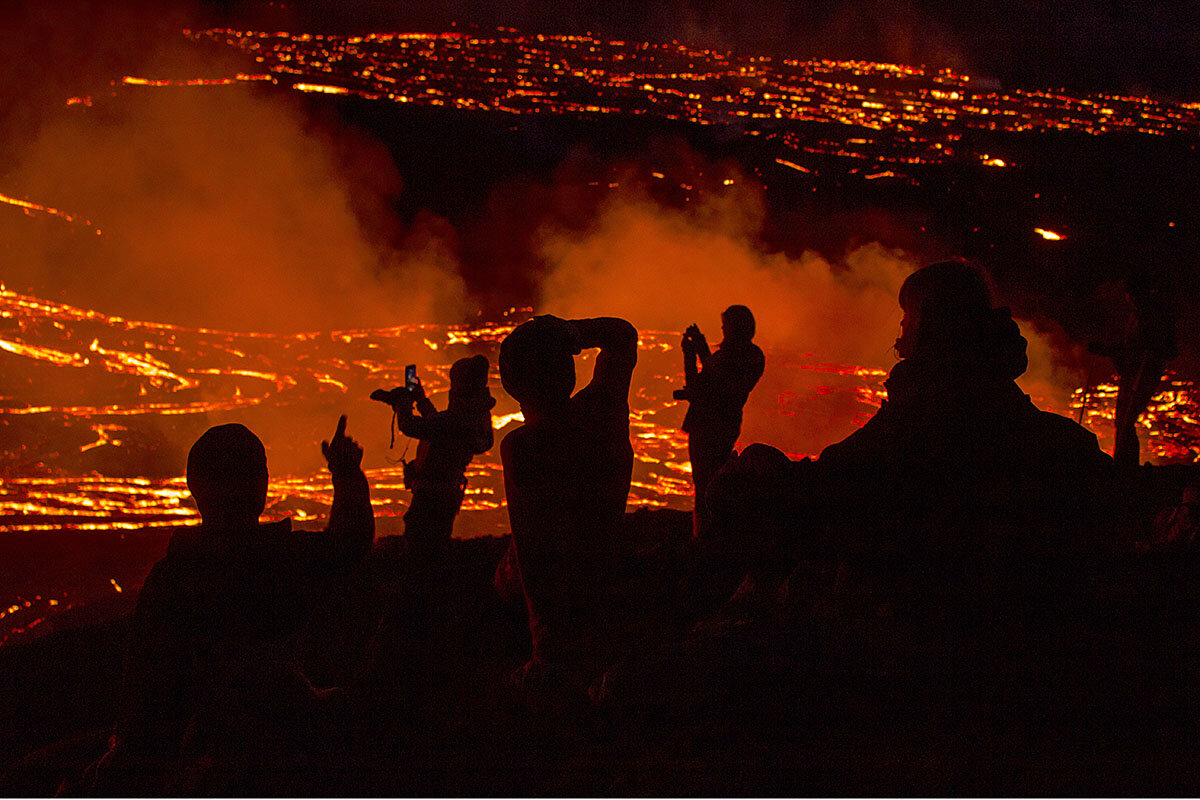Hot dogs and volcanoes

 Mark Sappenfield
Mark Sappenfield
For the past week, the world has gotten a glimpse of a spring campfire, Iceland-style. When the Fagradalsfjall volcano erupted 17 miles south of the capital city of Reykjavík, people did not flee in terror. They came by the thousands to watch the fountains of lava. “It’s absolutely breath-taking,” said one visitor. “It smells pretty bad,” said another. A few cheeky scientists even cooked hot dogs on the lava flow.
Different volcanoes behave differently. Ash from Iceland’s Eyjafjallajökull famously disrupted European air travel for about a week in 2010. But when your island is basically nothing but volcanoes, you learn to live with them – and how to predict what they’ll do. A March 12 article in The Reykjavík Grapevine began with the words: “By the time you read this, a volcano may have erupted.” Exactly one week later, it did.
With an array of sensors detecting seismic activity and ground deformation, Iceland knew this was coming. What’s more, data suggests this could be the beginning of a volcanic cycle that happens every 800 years. “If this transpires,” writes National Geographic, “the Reykjanes Peninsula could be bathed in the glow of a thousand volcanic fires that ignite, disappear, and then reappear intermittently for an entire human lifetime.”
That’s a lot of hot dogs.




